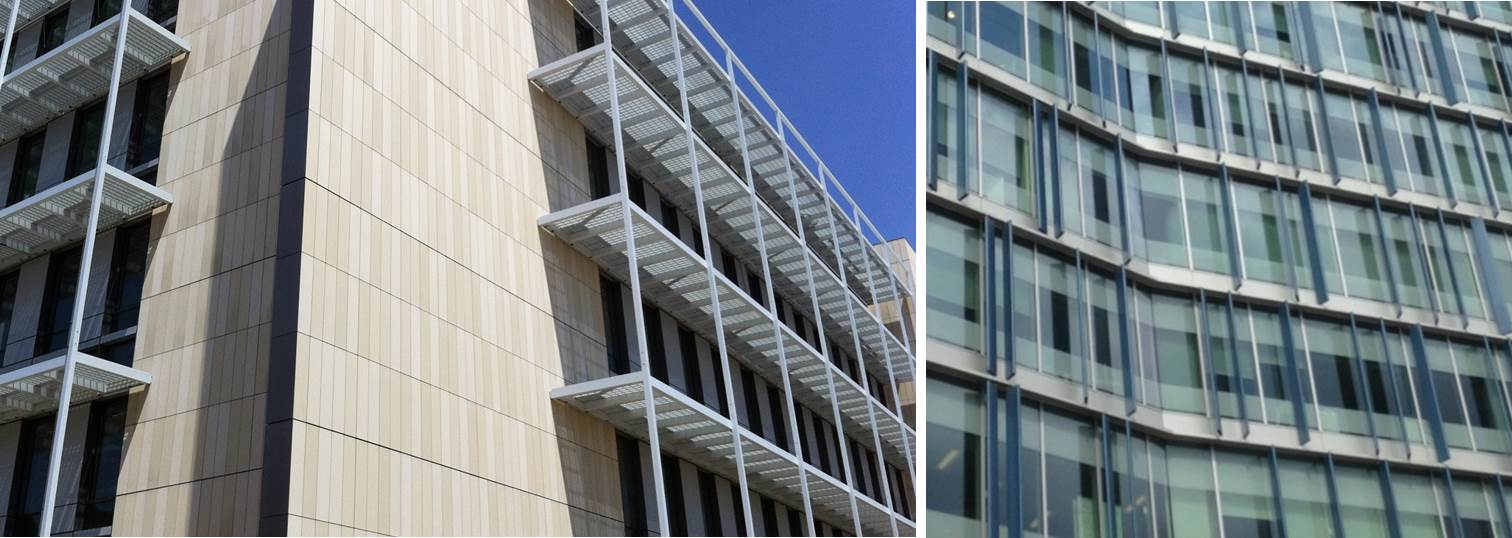Non-Coplanar Shading
Exterior shading such as overhangs, fins, and awnings that project from the plane of the façade are called non-coplanar shading systems. These systems provide a relatively unobstructed view while shading the window from direct sun. The shades themselves are often specified with non-opaque materials such as fritted glass, punched metal, expanded metal mesh, or fabric. Some systems, such as the drop arm awning, are operable. LBNL researchers are working with industry to characterize and measure the window heat gain and daylighting performance of these systems.
Simulation tools such as EnergyPlus can model opaque non-coplanar systems (e.g., an overhang made of solid metal). For those that use a non-opaque material, EnergyPlus currently assumes a hemispherically diffusing, solar-optical output distribution, which is a good approximation for a fabric awning but not for a louvered overhang. LBNL researchers are developing new tools that will enable routine, more accurate modeling of non-coplanar shading systems made of optically complex or light-scattering materials.

Opaque, vertical and horizontal exterior shading elements (right) can be modeled with EnergyPlus. Complex shading elements that block and scatter incident radiation, such as the metal mesh overhang on the UCSD Biomedical Building II (left), can be more accurately modeled using a combination of Radiance and EnergyPlus. Photo: Craig Johnson (left), Eleanor Lee (right).



